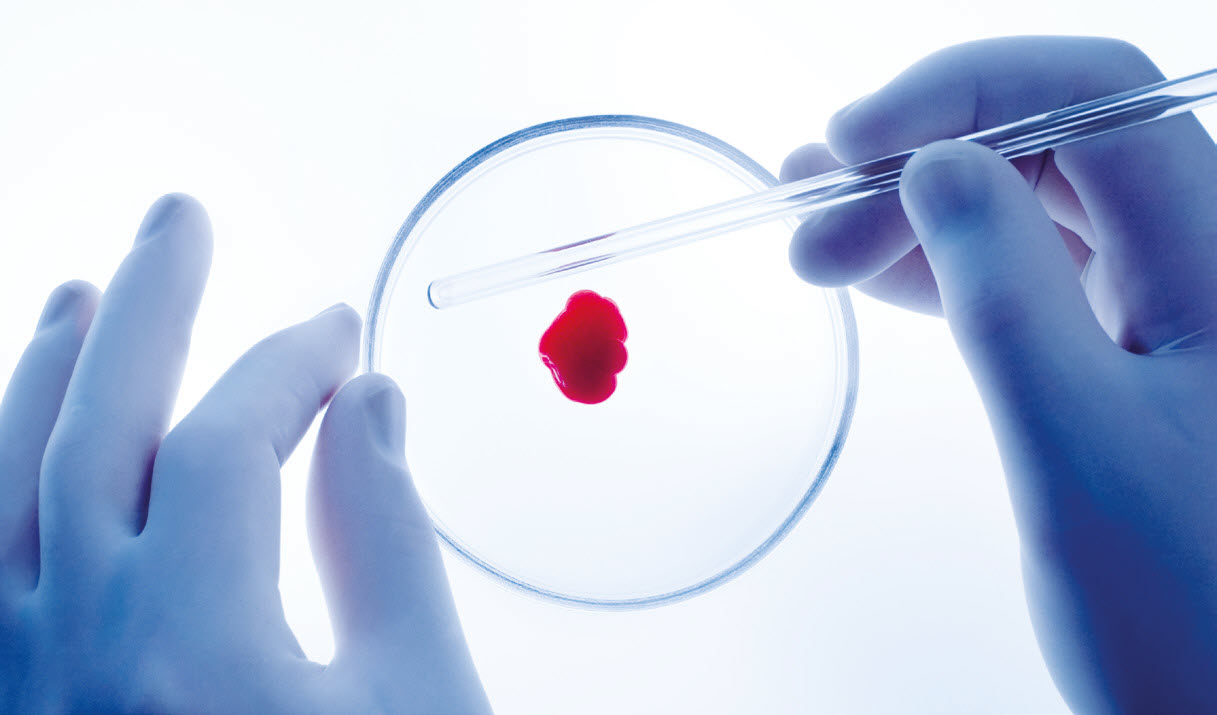Hematology studies the structure and functions of blood, as well as the causes and mechanisms of blood diseases. We will tell you about the symptoms of seeing a hematologist, blood diseases, diagnosis, prevention and so on.
Who's a hematologist?
A hematologist specializes in the diagnosis and treatment of blood diseases. Hematology is a section of medicine which studies the structure and functions of the blood system, causes and stages of blood diseases, and also develops methods for their recognition, treatment and prevention. Currently, blood diseases account for 5-8% of the total number of human diseases.
What does the hematologist treat?
A hematologist identifies the cause and diagnoses the blood disease. He cures diseases such as:
- lympholeukosis is a malignant blood tumor;
- myeloleukemia is a malignant disease with a genetic anomaly;
- multiple myeloma - blood cancers;
- valdestrem's macroglobulinemia, a malignant formation associated with increased blood viscosity;
- lymphomas - lymphatic tissue diseases;
- autoimmune thrombocytopenia (Werlhof disease) - reduced platelet count, increased bleeding;
- anemia of various genesis (including iron deficiency, B12- and folio deficiency, hemolytic anemia).

What should I address to a hematologist with?
Symptoms
Blood diseases can cause various symptoms in almost any part of the body. Most often the symptoms are caused by a decrease in the number of blood components:
- reduced erythrocyte and hemoglobin levels can cause symptoms of anemia, such as fatigue, weakness and shortness of breath;
- a decrease in white blood cell count and immune system proteins can lead to recurrent fever and infections;
- reduced platelet count or clotting factors can lead to pathological bleeding and bruising.
Sometimes symptoms may be associated with elevated blood levels:
- increased red blood cell count can lead to headache and full-bloodedness;
- increases in white blood cell count or immune system proteins can lead to blood clotting;
- elevated platelet count or clotting factors may cause thrombosis.
Some symptoms are more common in blood diseases. Some examples are as follows:
- a blood clot in the blood vessels of your legs;
- a red dot skin rash caused by a significant drop in platelet count;
- bloody bubbles in the mouth;
- an increase in lymph nodes;
- pallor of the skin;
- eating of ice, mud or clay is typical of iron deficiency anemia.
Diseases of the region hematology
Anemia
Anemia is a pathological condition characterized by low levels of erythrocytes or hemoglobin in the blood, which impairs oxygen transmission to the tissues and causes hypoxia, i.e. oxygen deprivation of the tissues.
Lymphoma
Lymphoma is a disease of lymphatic tissue, characterized by an increase in lymph nodes or lesions of various internal organs, which occur uncontrolled accumulation of "tumor" lymphocytes.
Multiple myeloma
Multiple myeloma is a malignant plasma cell tumor producing monoclonal immunoglobulins that penetrate into the adjacent bone tissue and destroy it. Characteristic manifestations include bone pain, kidney failure, hypercalcemia, anemia, recurrent infections.
Lympholecosis
Lympholecosis is a malignant disease in which the bone marrow produces a large number of immature, unable to perform its function of lymphocytes.
Autoimmune thrombocytopenia
Autoimmune thrombocytopenia is a blood disorder in which autoantibodies to their own platelets are formed. The causes are quite varied and can be of both immune and non-immune nature. The development of clinical symptoms with insufficient compensation for thrombocytosis may be due to a number of factors such as vitamin deficiency, drug intake, exposure to toxic substances, infection.
Diagnosis of hematological diseases
Clinical consultation with a hematologist begins with an examination of the patient and collection of anamnesis. Based on the results of the reception, the hematologist prescribes various laboratory or instrumental examinations, on the basis of which he makes an accurate diagnosis and prescribes a specific treatment. During a detailed examination, the hematologist prescribes the following procedures and tests:
- ultrasound of abdominal organs and lymph nodes;
- x-ray examination of blood;
- biopsy of lymph nodes with histological examination;
- sternal bone marrow puncture with morphological examination;
- caulogram (blood clotting system analysis);
- computed tomography of internal organs and bone scanning.
After an accurate diagnosis by a hematologist, 80% of haematological diseases do not require hospitalization and outpatient treatment is possible.

Prevention of blood diseases
The prevention of blood system diseases is as follows. It is timely diagnosis and treatment of diseases accompanied by blood loss (hemorrhoids, ulcer disease, erosive gastritis, nonspecific ulcerative colitis, uterine fibromatosis, hernia of the esophageal aperture of the diaphragm, intestinal tumours), worm infections, viral infection. If they cannot be cured, it is recommended to take iron preparations, vitamins (especially B12 and folic acid) and, accordingly, to use in food products containing them. Blood donors, pregnant and lactating women, and patients with heavy menstruation should also use these measures.
Treatment of hematological diseases
Appointed strictly according to existing protocols for the treatment of dependence on nosology (chemotherapy, monoclonal antibodies, interferon drugs, etc.). Important features of pregnancy planning and tactics depending on the effectiveness of treatment.
Pediatric hematologist
Of the serious hematological problems encountered in children are diagnosed with bone marrow failure, neutropenia, anemia, erythrocytosis, thrombocytopenia (most often idiopathic thrombocytopenia), thrombocytosis, rare disorders of the immune system and other rare hematological disorders. Children's hematologists also provide advice on blood clotting disorders.
Hematology for foreign nationals
Foreign citizens can get medical care in Belarus for a fee or if they have insurance.
Medical centers, department and hematology clinics in Minsk
On this page, you will find the best medical centers and hematologists to consult.
Over the last two decades, methods of treating blood diseases have evolved considerably. Blood system disorders can be treated with medication, bone marrow transplants and/or cell therapy such as blood transfusions and the use of cellular growth stimulants. Although many blood system disorders are chronic diseases, most patients can live normally despite the disease.
Photo: hyser.com.ua, selfhacked.com



 Back
Back




